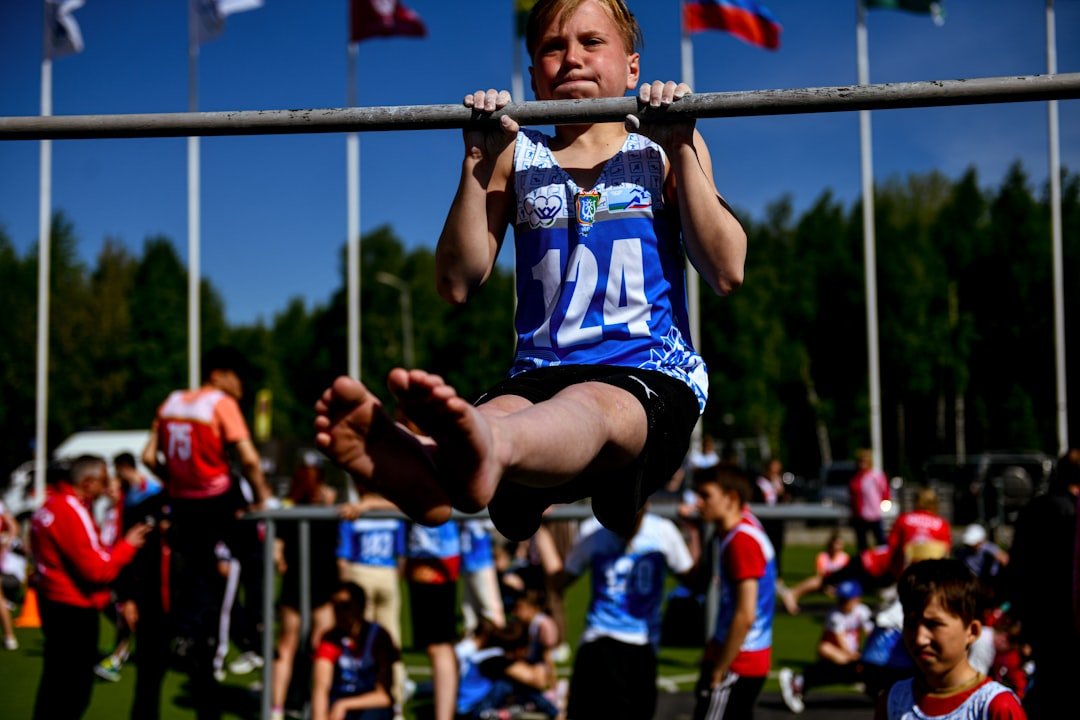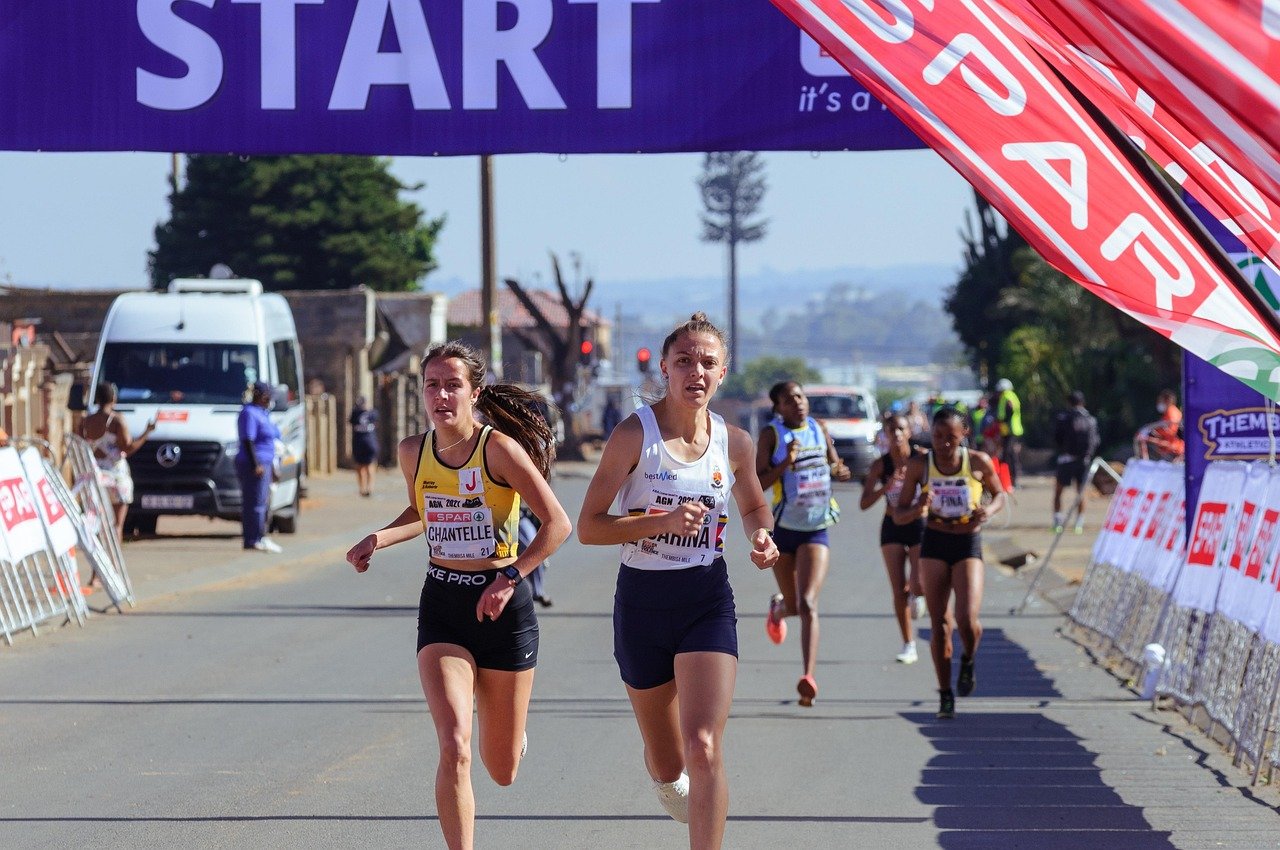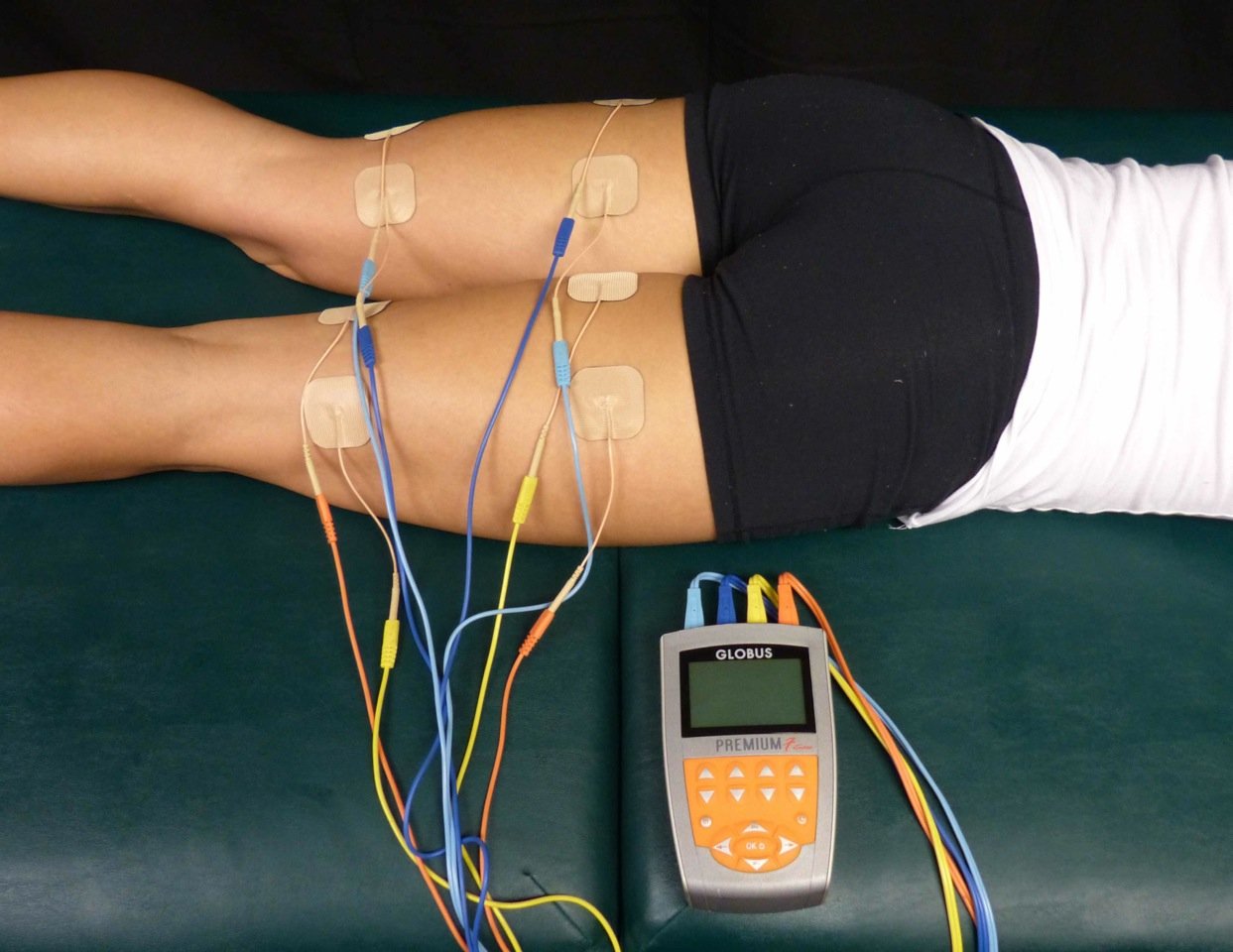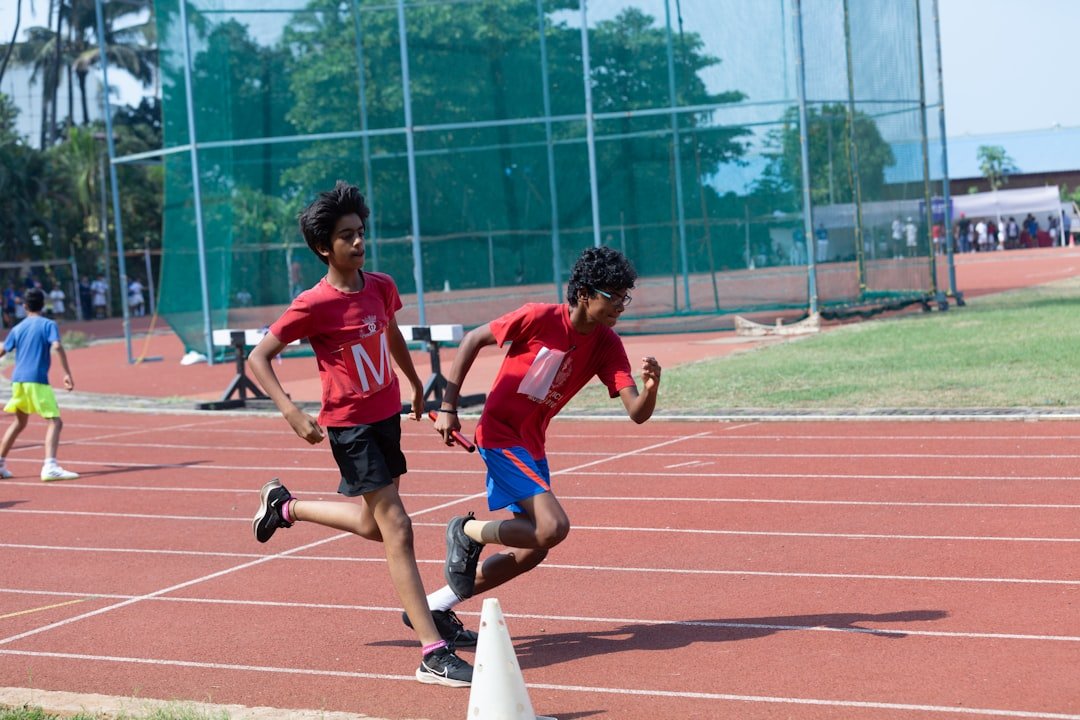Have you ever watched an Olympic sprinter explode off the starting blocks or witnessed a marathon runner maintain an incredible pace for hours, and wondered what makes these athletes so extraordinary? While training, dedication, and mental toughness are crucial, there’s a hidden factor that might be even more fundamental to athletic excellence: genetic mutations. These tiny changes in our DNA could be the secret ingredients that separate good athletes from legendary ones.
The Science Behind Genetic Athletic Advantage

The impact of genetics on physiology and sports performance is one of the most debated research aspects in sports sciences, with nearly 200 genetic polymorphisms having been found to influence sports performance traits. Scientists have discovered that the genetic contribution to athletic performance is approximately 50%, while endurance and power-related characteristics are within a range of 44–68% and 48–56%, respectively.
What’s fascinating is that over 20 polymorphisms may condition the status of the elite athlete. This means that elite performers aren’t just made through training – they’re also born with specific genetic advantages. Think of it like having a naturally turbocharged engine versus a standard one; both can be tuned and improved, but one starts with a clear advantage.
ACTN3: The Speed Gene Everyone Talks About

Perhaps the most famous athletic gene is ACTN3, often called the “speed gene.” All male Olympian power athletes in research cohorts had at least one copy of the functional R allele of ACTN3, suggesting that “every variable counts” at the highest levels of sporting competition. This gene creates a protein called alpha-actinin-3, which is found exclusively in fast-twitch muscle fibers.
ACTN3 encodes for alpha-actinin-3, a protein expressed only in type-II muscle fibers, and X allele homozygotes are deficient in this protein, which is associated with a lower fast-twitch fiber percentage. Essentially, people with certain versions of this gene have muscles that are naturally better at explosive, powerful movements. A review of 20,753 subjects found that the R allele was significantly associated with elite power athlete status, and Olympic power athletes showed that none had the XX genotype.
The distribution of this gene varies dramatically across populations. The frequency of the α-actinin-3–deficient genotype (577XX) varies from 25% in Asian populations to <1% in an African Bantu population; the frequency in Europeans is ∼18%.
Fast-Twitch Versus Slow-Twitch Muscle Fiber Advantages

Fast-Twitch Versus Slow-Twitch Muscle Fiber Advantages (image credits: pixabay)
The ACTN3 gene essentially determines your muscle fiber composition, which explains why some people are natural sprinters while others excel at endurance events. Slow-twitch muscle fibers contract slowly but can work for a long time without tiring, enabling endurance activities like long-distance running, while fast-twitch muscle fibers contract quickly but tire rapidly and are good for sprinting and other activities that require power or strength.
The presence of α-actinin-3 has a beneficial effect on skeletal muscle function in generating forceful contractions at high velocity, and there’s also a genotype effect in female sprint and endurance athletes, with higher than expected numbers of 577RX heterozygotes among sprint athletes and lower than expected numbers among endurance athletes.
What’s remarkable is how this single genetic variation can influence athletic destiny. People with the RR genotype have more explosive power capabilities, while those with the XX genotype might find themselves naturally better at endurance activities. It’s like being born with either a Ferrari engine or a Toyota Prius motor – both have their strengths, but they excel in different areas.
ACE Gene: The Endurance Enhancer

While ACTN3 gets attention for power sports, the ACE gene is the endurance athlete’s secret weapon. The ACE II genotype was found to be associated with performance in endurance athletes, and the I allele has been consistently demonstrated to be associated with endurance-orientated events, notably in triathlons.
The ACE gene codes for angiotensin converting enzyme and is characterized by the presence (insertion, I allele) or absence (deletion, D allele) of a 287-bp fragment, with the longer I allele initiating lower enzyme activity and being associated with enhanced endurance performance. Think of the I allele as fine-tuning your cardiovascular system for sustained performance, like upgrading your car’s fuel efficiency system.
On the flip side, the D allele is associated with strength- and power-orientated performance and has been found in significant excess among elite swimmers. Research showed that in elite and top-elite Polish power athletes, an increasing trend of D allele frequency was found that remained statistically significant when compared to controls.
The Muscle Damage and Recovery Connection

Here’s something most people don’t know: these genetic variations don’t just affect performance – they also influence how quickly you recover from intense exercise. The ACTN3 R577X polymorphism potentially modifies exercise adaptation, exercise recovery, and exercise-associated injury risk, as this polymorphism directly influences both muscle structure and muscle fiber phenotype.
Several investigations have found that α-actinin-3 deficiency due to XX homozygosity in the ACTN3 R577X polymorphism can negatively affect sports performance through several structural, metabolic, or signaling changes, and new evidence suggests that α-actinin-3 deficiency may also impact sports performance through indirect factors such as higher risk for injury or lower resistance to muscle-damaging exercise.
This means that some athletes aren’t just naturally faster or stronger – they also bounce back from training sessions more quickly. It’s like having a built-in recovery system that works overtime while you sleep.
Population Differences and Ethnic Variations

What makes this genetic story even more intriguing is how these beneficial mutations are distributed differently across various populations. The XX genotype frequency differs across ethnic groups, with approximately 25% of Asians, 18% of Caucasians, 11% of Ethiopians, 3% of Jamaican and US African Americans, and 1% of Kenyans and Nigerians possessing the XX genotype.
The unfavorable (associated with reduced strength) rs671 A allele is not present in Europeans or South Asians (frequency 0%), but common in Chinese, Japanese, and Vietnamese populations (15–25%). This demonstrates that the genetic determinants of some sport- and exercise-related phenotypes are restricted to certain populations.
These population differences might partly explain why certain regions produce exceptional athletes in specific sports. East African distance runners, Caribbean sprinters, and European powerlifters might have genetic advantages that have been naturally selected over thousands of years.
Beyond the Famous Two: Other Performance Genes

While ACTN3 and ACE get most of the attention, scientists have identified many other genetic variations that influence athletic performance. As of the end of May 2023, a total of 251 DNA polymorphisms have been associated with athlete status, of which 128 genetic markers were positively associated with athlete status in at least two studies.
The most promising genetic markers include various alleles for endurance, power, and strength, covering everything from energy metabolism to muscle structure. Gene products modulate several physiological functions affecting performance and susceptibility to injuries in sports, influencing factors such as muscle fiber composition or the activity of aerobic and anaerobic enzymes.
Some genes affect oxygen delivery to muscles, others influence how efficiently your body produces energy, and still others determine how your muscles respond to training. It’s like having multiple specialized systems all working together to create athletic excellence.
The Limitations of Genetic Testing for Athletics

Before anyone rushes out to get genetic testing done, it’s important to understand the limitations. Elite performance still cannot be predicted well using only genetic testing, and with the current evidence, it is certainly too early to determine how to use genotyping as a tool for predicting exercise/sports performance or improving current methods of training.
Data shows that there is no statistically significant association between genomic variants and athletic performance either for endurance or power sports, underlying the fact that it is highly risky and even unethical to make such genetic testing services available to the general public without proper scientific evidence.
The reality is that genetics is just one piece of a much larger puzzle. Environmental factors like training, nutrition, coaching, and even psychological factors play enormous roles in athletic success. Having the “right” genes might give you an advantage, but it won’t automatically make you a champion.
Training Implications and Personalized Programs

Even though genetic testing can’t predict athletic success, understanding these genetic variations could potentially help optimize training programs. The use of gene profiling techniques could be profitable to individually optimize training contents and positively influence athletic performance, with specific preventive training potentially being used to avoid muscular injuries in the presence of unfavorable genetic predisposition.
For instance, someone with the ACTN3 RR genotype might benefit more from high-intensity, power-focused training, while someone with the XX genotype might see better results from high-volume endurance work. Similarly, understanding ACE variants might help determine optimal training intensities and recovery periods.
However, it’s important to consider the limitations surrounding many studies, as subject numbers tend to be low with large heterogeneity between study cohorts, and the effect of these polymorphisms may be smaller in untrained subjects.
The Future of Genetic Research in Sports

The field of sports genetics is evolving rapidly, with new discoveries being made regularly. A combination of the fields of genomics, epigenomics and transcriptomics along with improved bioinformatic tools, in addition to precise phenotyping, is required for future research to understand the inter-relations of exercise physiology, sports performance and susceptibility to diseases.
Recent systematic reviews show 41 markers identified in the last 2 years by performing genome-wide association studies on African American, Jamaican, Japanese, and Russian athletes, indicating that GWAS represent a promising and productive way to study sports-related genotypes. This suggests we’re only scratching the surface of understanding how genetics influences athletic performance.
Future research might reveal new genetic markers, better ways to interpret existing ones, or even potential gene therapies that could enhance performance. However, such advances will likely raise complex ethical questions about fairness in competition and the nature of sport itself.
Conclusion

The relationship between genetic mutations and extreme athletic ability is far more complex and fascinating than a simple “athletic gene” story. While specific genetic variations like those in ACTN3 and ACE genes can provide meaningful advantages in power and endurance sports respectively, they represent just a fraction of the genetic puzzle that creates elite athletes.
Elite athletic status results from the interaction of an optimal combination of genetically driven physical and mental traits with the ideal environment for athletic success. These genetic mutations might give some athletes a head start, but they’re not destiny – they’re more like having better raw materials to work with.
The most remarkable aspect of this research isn’t that some people have genetic advantages – it’s how these tiny variations in our DNA can have such profound effects on human performance. As our understanding grows, we might eventually unlock the secrets to maximizing every individual’s athletic potential, regardless of their genetic starting point.
What would you have guessed about the role genetics plays in creating superhuman athletic performance?

Jan loves Wildlife and Animals and is one of the founders of Animals Around The Globe. He holds an MSc in Finance & Economics and is a passionate PADI Open Water Diver. His favorite animals are Mountain Gorillas, Tigers, and Great White Sharks. He lived in South Africa, Germany, the USA, Ireland, Italy, China, and Australia. Before AATG, Jan worked for Google, Axel Springer, BMW and others.



